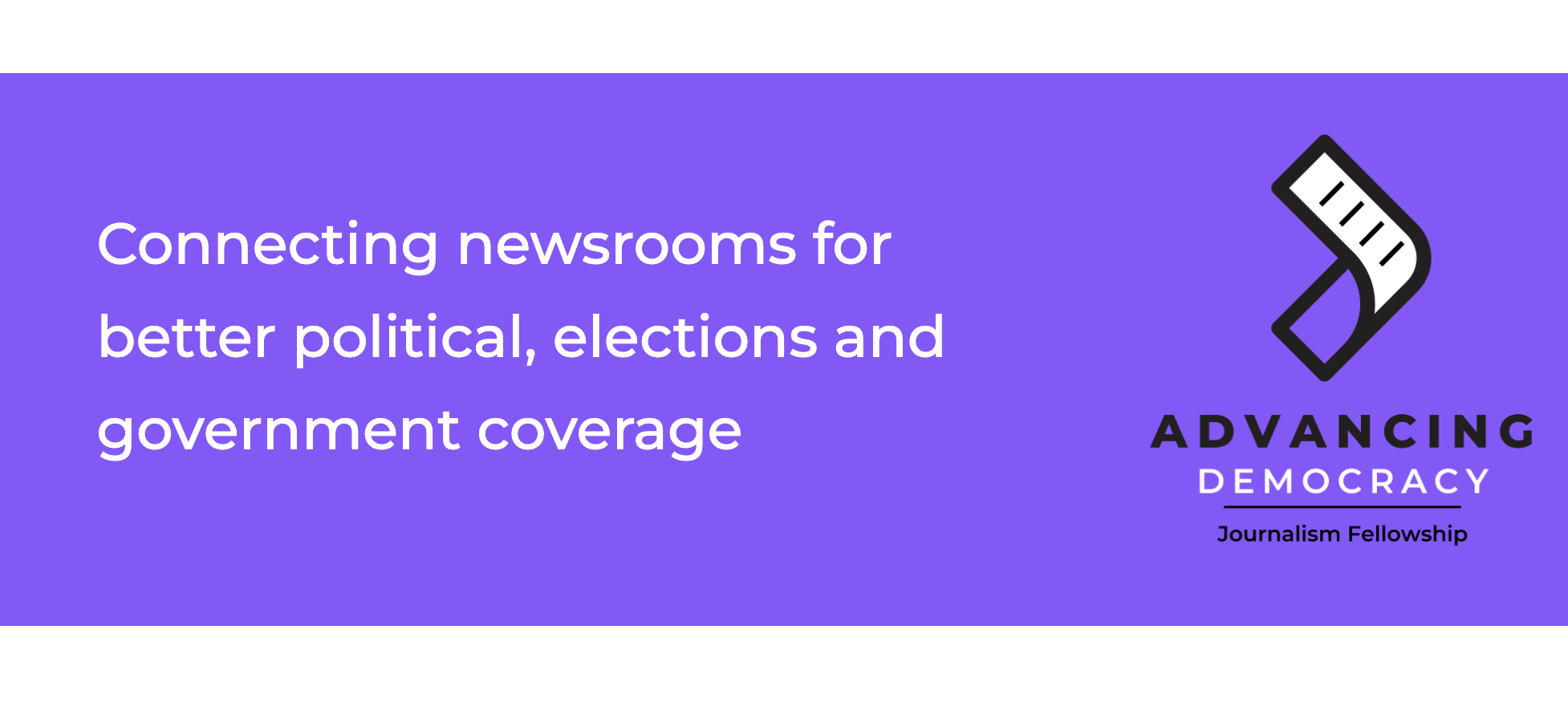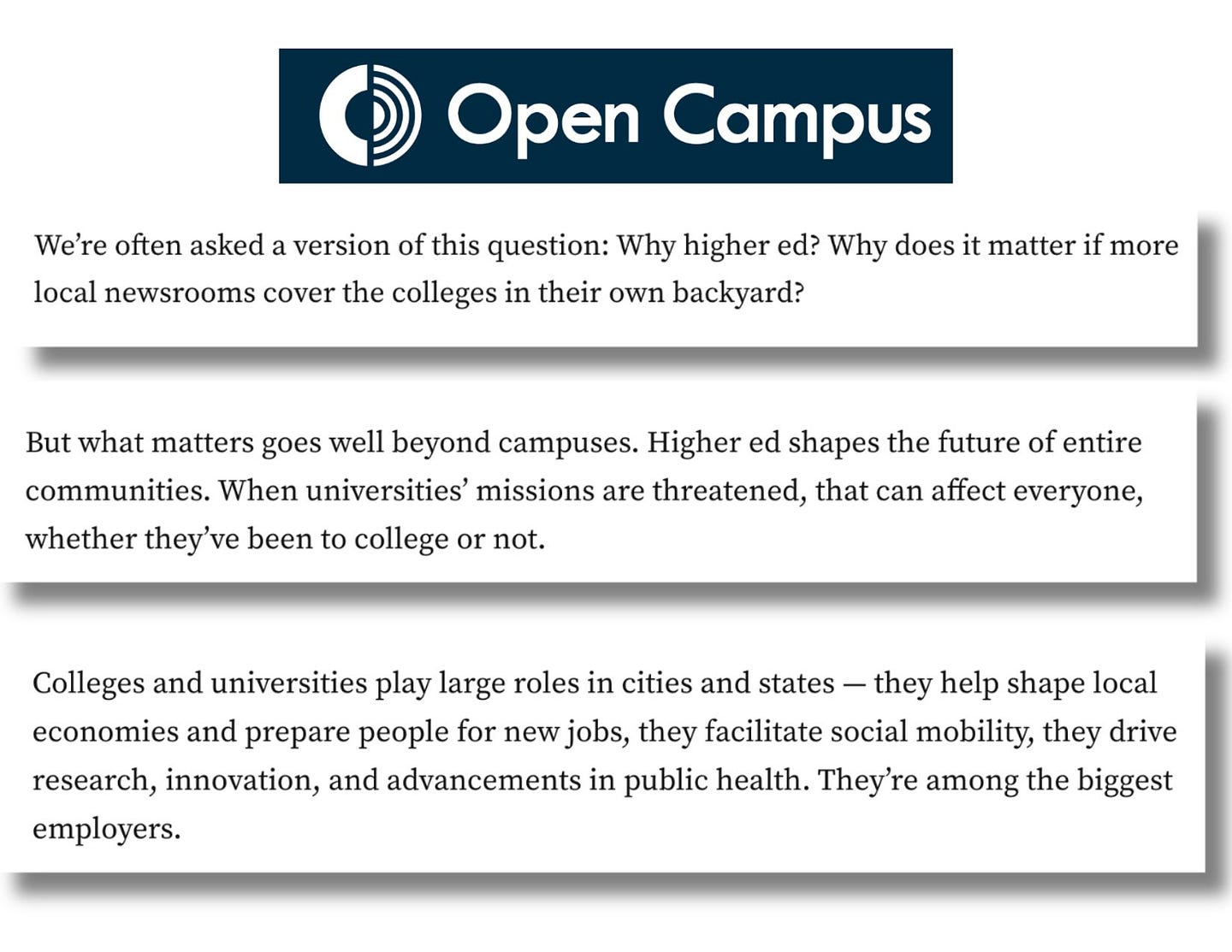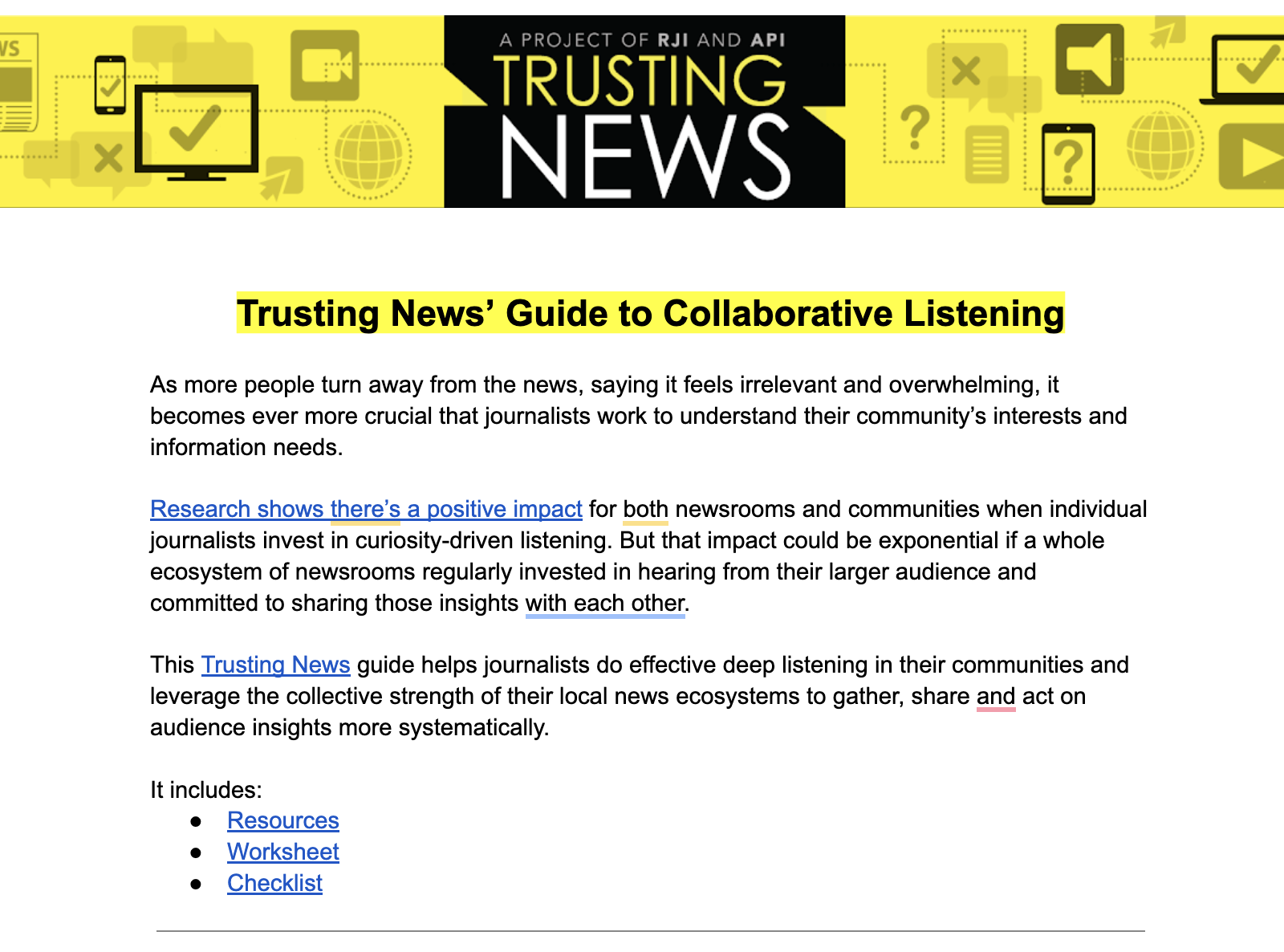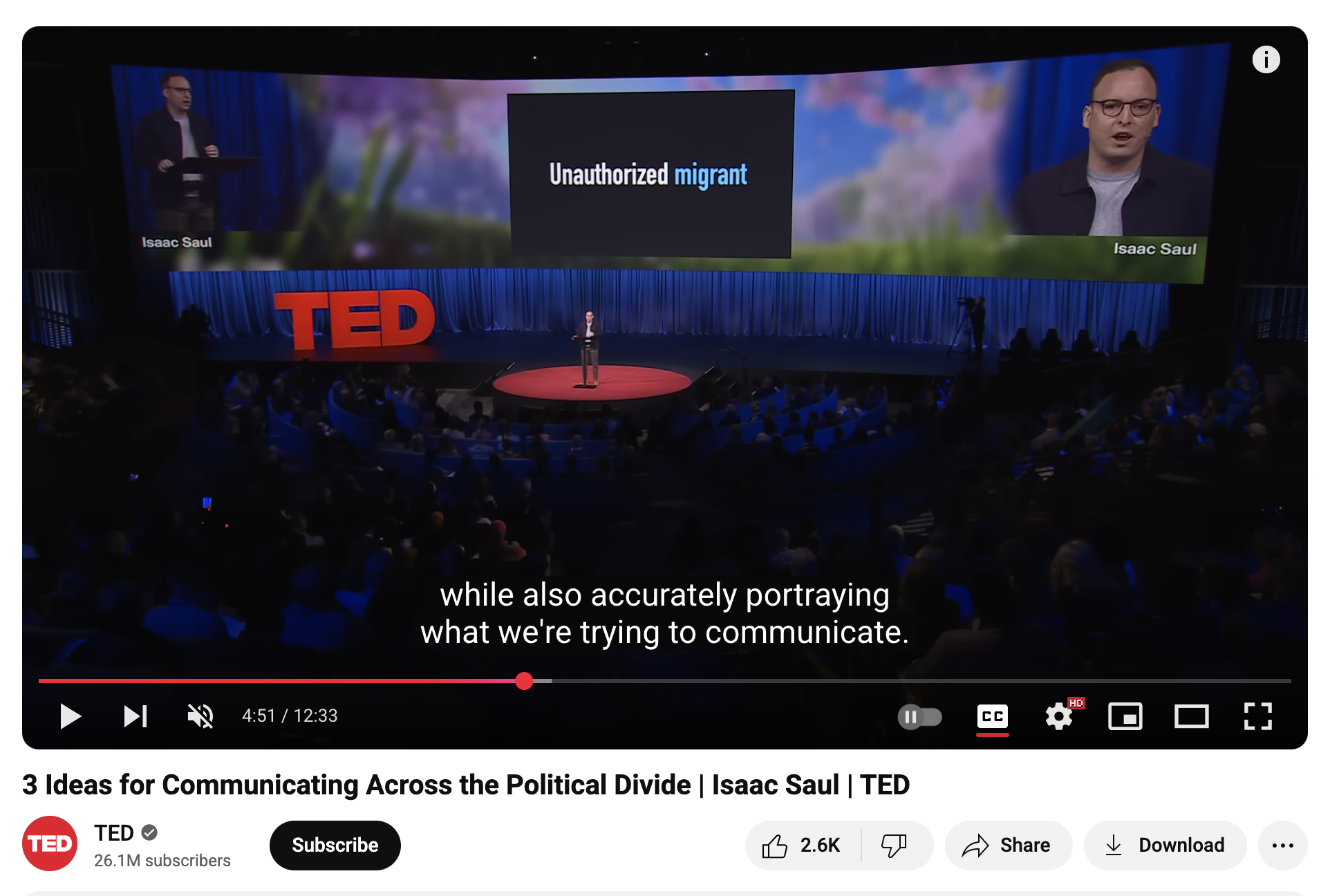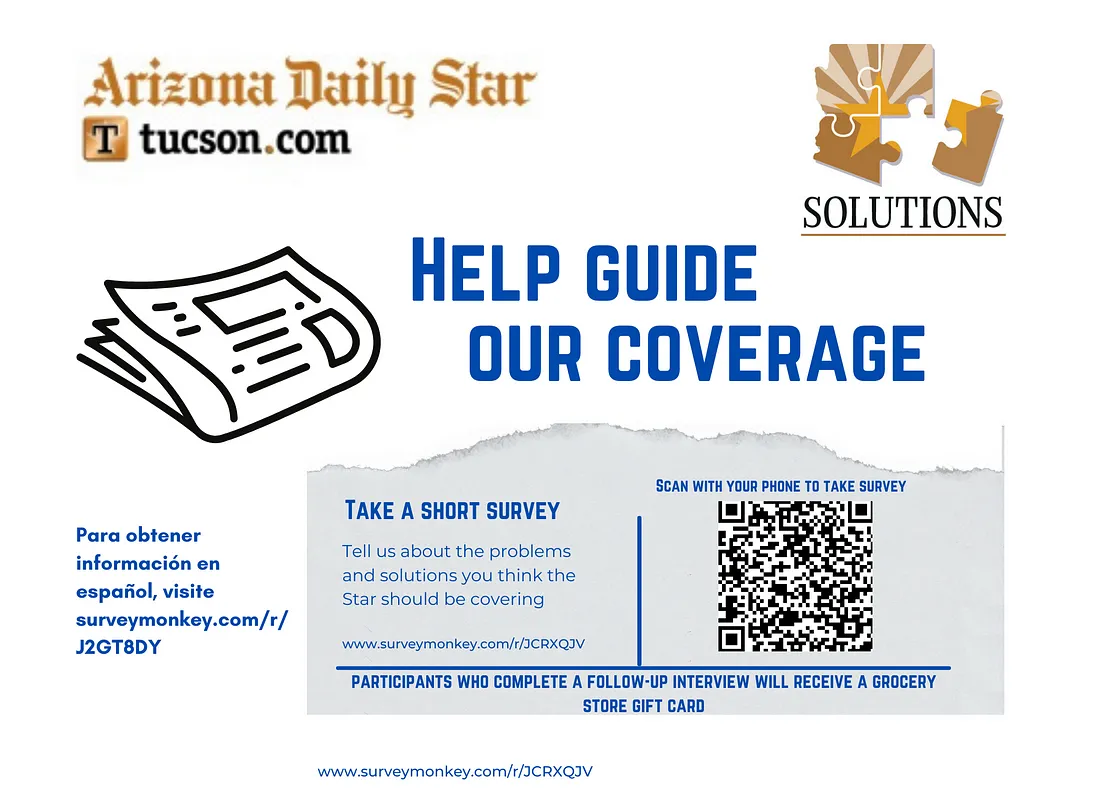
Listening is a crucial component when it comes to building new audiences. We have research that shows this, but it also makes sense: If journalists want to provide coverage that is relevant and useful to people they aren’t already effectively reaching, they have to first take the time to get a sense of what those people […]
How to engage and reach new audiences with postcards and snail mail
Listening is a crucial component when it comes to building new audiences.
We have research that shows this, but it also makes sense: If journalists want to provide coverage that is relevant and useful to people they aren’t already effectively reaching, they have to first take the time to get a sense of what those people think of the news and what kind of coverage is important to them.
There are lots of ways journalists can do this, through social media callouts, soliciting questions to guide coverage, attending community events, or simply having one-on-one conversations.
But oftentimes the challenge with these outreach efforts is making sure they get in front of the people you’re trying to reach — people who aren’t regularly seeing or engaging with your content.
This post highlights an example of how one reporter tried to solve this challenge by using subscriber data and the United States Postal Service.

A case study: How Caitlin Schmidt at the Arizona Daily Star used postcards to hear from people her newsroom wasn’t already reaching
When launching a new solutions beat last year, Arizona Daily Star reporter Caitlin Schmidt wanted to make sure she was covering issues the community really cared about.
Through a fellowship and funding from the Solutions Journalism Network, she launched a community survey to learn more about which problems and solutions people wanted to be covered.
One of her goals was to hear from communities beyond those already in the newspaper’s current audience. To do this, she created postcards with a QR code and a link to the survey. She used newsroom subscription data to determine where there was low engagement with the newspaper and sent the postcards to people in those zip codes.
“One of the zip codes I targeted with the postcards has historically been economically depressed, so I knew it was likely that many residents weren’t reading the Star due to financial reasons (print subscriptions are costly and not everyone has online access.),” Schmidt said. “It was important to me that I receive feedback from non-readers about the issues they face in life.”
We really like this approach for a few different reasons:
- It didn’t involve any special technology, CMS, or costly tool.
- It met people where they are — as Schmidt said, many people can’t afford subscriptions and many aren’t seeing your coverage online.
- The project prioritized hearing from communities most impacted by some of these issues, not just hearing from sources who are easier to reach (i.e. subscribers or donors).
While there were only a handful of responses — just a few people who completed the survey said they received it via mail and many did not say how they found out about the survey, according to Schmidt — even sending out postcards like this can be a good way of creating a touch point with new communities.
The postcards included details about the survey in English and Spanish and the survey was offered in both languages as well. The survey also had a blurb about why the newspaper was looking for feedback from the community.
In August, the Arizona Daily Star created a solutions journalism beat to tell the stories of people and groups working to solve problems in their Southern Arizona communities. We need your help to get it right. Please answer the following questions to help guide our coverage.
Small things like this can help signal to communities that journalists care about their input, their lives and the issues they are facing. That message is made more clear by meeting people where they are comfortable and can engage: in their mailbox and in their spoken language.
To take this work further, we would recommend adding one or two sentences on the postcards themselves about the mission of the new beat. Remember people don’t know you have ethics or care about accurately reflecting the community. Often it’s actually the opposite — many people think journalists don’t care about getting it right and don’t care about people like them. So by including a brief mission statement on the postcard itself, you can help further demonstrate to your audience you’re committed to transparency and inclusive coverage.
Read the Q&A below to learn more about how Schmidt created these postcards, the results, and what she learned from the process.
Trusting News would like to thank Schmidt for her effort and dedication to building trust with their community through engagement work. Through her work, we are able to learn more about what works best to build trust with the public. Without her willingness to experiment, we would not be able to share what works best for building trust with the journalism community. If you are experimenting with building trust, let us know here.
A Q&A with Caitlin Schmidt, the journalist behind the work
Q: What issue related to trust were you trying to solve? What were you hoping users learned or understood better by consuming this content?
A: As part of a fellowship through the Solutions Journalism Network, I launched a community survey to seek guidance on what kinds of problems and solutions people wanted to see covered in the Arizona Daily Star’s newly created solutions beat. I wanted to make sure that we were seeking feedback from not just readers, but also people who aren’t reading the Star. In addition to posting fliers in various gathering spots, ProPublica’s engagement experts suggested that we also use the mail to reach people. Using our subscriber data, I targeted two zip codes with low subscription rates, knowing that these households are likely not regular readers of the Star. Using the postal service’s Every Door Direct Mail service, I chose routes and mailed postcards to 1,850 households in the two zip codes.
Q: How would you describe the effectiveness of the content and strategy? Did you think it was effective? Ineffective?
A: I do believe this was an effective method in reaching new people and at least letting them know that the Star has a solutions beat and is producing this kind of coverage. My goal in the survey was not just to solicit information, but also engage people unfamiliar with the Star and spread solutions journalism throughout the community. If the postcards resulted in a new reader, it was a success, especially if the reader is someone that solutions coverage will benefit.
Q: Please provide metrics related to this content (or a summary describing the performance of the content). Please consider both quantitative data and qualitative feedback from journalists and news consumers.
A: While we gave survey takers the option to tell us how they found out about the survey, not everyone filled out that field, so I’m not sure exactly how many people took the survey after receiving a postcard. There were 195 survey responses and three respondents indicated they learned about the survey through the postcard. But, a large portion of respondents left the field blank, so it’s unclear how many were postcard recipients.
Q: Describe what it was like to produce this content. Did it come easily to you? Was it challenging? Did it make you think differently?
A: I’m not a designer by any means, but I was able to use Canva to pretty easily design all the signage for my survey, including the postcard. I used variations of the same design for the different types of media (fliers, postcards, signage,) so it wasn’t much of a challenge, since I only had to create one design. I sought feedback from friends and colleagues, knowing that what’s eye-catching to one person may not draw the attention of another.
Q: Can you describe how long producing this content took? Did you involve other members of your newsroom? If so, can you describe what that process looked like and how long it took?
A: I had a short timeline to launch the survey and solicit feedback leading up to a virtual community conversation on April 30, so the whole process took about two months from start to finish. I did all this on my own but received help from our marketing person in gathering subscriber zip code information and managing the survey through Survey Monkey. The postcard was all me.
Q: Would you use this trust-building strategy or content again? If so, would you do anything differently?
A: I would use bulk postcards again to alert community members to future surveys, new beats, events and more. I think it’s an effective way to reach people we aren’t already reaching and keep them informed about what’s happening at the Star.
Q: How would you rate the difficulty of producing this content?
A: Mid-level. It was harder than writing a news story but easier than producing a video.
Q: How would you describe the user response to this content? If there are specific comments you would like to share, please share a link to the comment, screenshot, quote, etc.
A: The people who responded to the survey and indicated they received a postcard described challenges with affordable housing and living on fixed incomes. One of the zip codes I targeted with the postcards has historically been economically depressed, so I knew it was likely that many residents weren’t reading the Star due to financial reasons (print subscriptions are costly and not everyone has online access.) It was important to me that I receive feedback from non-readers about the issues they face in life, so to even hear from three people who don’t already engage with the Star was incredibly valuable for me.
Q: How would you describe the response from your newsroom after publishing this content? Were people excited to work on this or see the content publish? Were people skeptical? Was it hard to convince people this was necessary?
A: The postcards were funded through my fellowship and I was the sole member of the project, so this didn’t rely on the buy-in of others. Still, management liked this idea and we’re considering using postcards to alert community members to new beats, newsletters and more in the future. Note: Schmidt said the postcards cost around $354 to print and $367 to mail.
Q: If you would recommend other newsrooms try this approach, what would you say to persuade them?
A: The amount of funding limited how many postcards I could produce and mail out, but I would encourage other newsrooms to try this idea on a larger scale. Tucson has a population of about a million, so the 1,200 postcards I sent out only reached a very small percentage of households. It was tough to know if I was choosing the right zip codes or routes, so sending out a larger quantity would obviously cover more ground and hopefully generate a notable response.
At Trusting News, we learn how people decide what news to trust and turn that knowledge into actionable strategies for journalists. We train and empower journalists to take responsibility for demonstrating credibility and actively earning trust through transparency and engagement. Subscribe to our Trust Tips newsletter. Follow us on Twitter and LinkedIn. Read more about our work at TrustingNews.org.

Project manager Mollie Muchna (she/her) has spent the last 10 years working in audience and engagement journalism in local newsrooms across the Southwest. She lives in Tucson, Arizona, where she is also an adjunct professor at the University of Arizona’s School of Journalism. She can be reached at mollie@trustingnews.org and on Twitter @molliemuchna.
